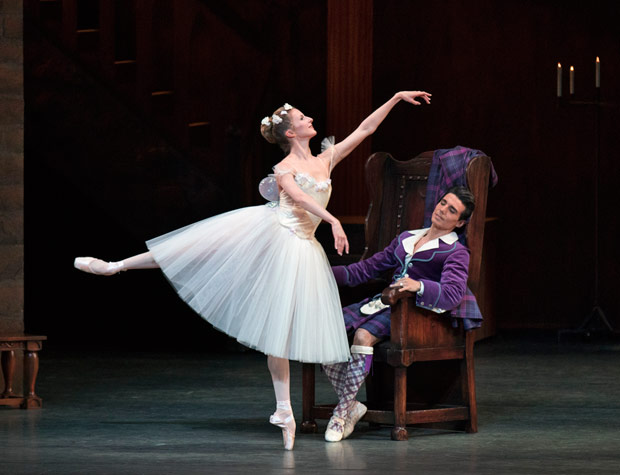
© Paul Kolnik. (Click image for larger version)
New York City Ballet
Spring Gala: Bournonville Divertissements, La Sylphide
New York, David H. Koch Theater
7 May 2015
www.nycballet.com
A Night of Bournonville
At first glance, it’s hard to think of two choreographers more unalike than August Bournonville and Balanchine. Bournonville’s ballets are sweet, youthful, and uplifting; Balanchine’s are stylized, adult, and often slightly remote, even when they deal in the subject of love. Balanchine depurates emotion; Bournonville humanizes it. But in at least two crucial ways, the choreographers are very much in accord. As Balanchine said of Bournonville, both “entertain with steps.” And both are deeply musical.
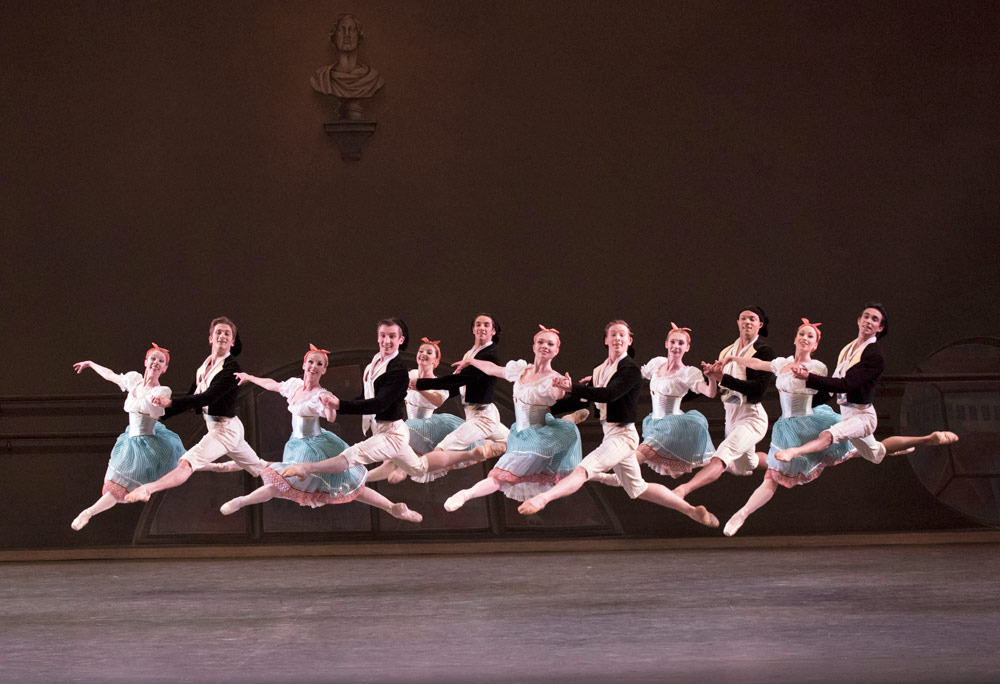
© Paul Kolnik. (Click image for larger version)
The mid-nineteenth-century technique developed by the Danish master, building upon an even older French style, is not an easy one to master. Ballet has changed, steps have disappeared and new ones have been created in their place; the use of the upper body, the arms, and the eyes are all strikingly different today. These older shapes and coordination contain an entire philosophy of the body and of movement. The same can be said of Balanchine. An all-Bournonville program like the one performed at the New York City Ballet gala is bound to strike even a casual Bournonville-watcher as non-idiomatic, even eccentric at times. Stylistic incongruences – heads and arms held at odd angles, stiff necks, wide variations in the degree of épaulement – are easily spotted.
The evening was made up of Bournonville Divertissements, a suite of excerpts originally staged for the company by the Danish teacher Stanley Williams, and, after an intermission, the 1836 story-ballet La Sylphide. The latter is an early Romantic-era gem, offering not only reams of multi-dimensional, buoyant steps, but also a rousing Scottish reel (with children!), a witch’s coven, and one of the most soul-crushing death scenes in the ballet repertory. (Why must the Sylph lose her wings and go blind before dying?).

© Paul Kolnik. (Click image for larger version)
Bournonville Divertissements is a bit harder to pull off, in part because the short dance excerpts have been shorn of the stories that surround them. It doesn’t help that the drop curtains make it appear as if the ballabile from the first act of Napoli were set in a ballet studio rather than in the streets of Naples. The tarantella, too, appears to take place on a promontory above Copenhagen rather than in Italy, where it surely belongs. In Bournonville, context matters, particularly since the dancers are always meant to represent real people.
The divertissements included bits from Napoli, Abdallah, and Flower Festival in Genzano. Stylistically speaking, Flower Festival in Genzano was perhaps the oddest performance of the night. This pas de deux is meant to depict a bashful couple walking together, flirting, and taking part in some playful competition. However there is absolutely nothing bashful or girlish about Sara Mearns, the dancer who performed the woman’s role. She holds herself like a queen, and has a way of looking at her partners as if to say, “bring it on.” And yet, somehow, Mearns bent the role to her will: forceful, bold, adult. Her powerful legs and feet lent panache to the many leaps, stirrings of the legs in the air, and beaten jumps. Tyler Angle, her partner, was more convincingly Bournonvillian: he was one of the few to capture the rocking feeling so typical of the Danes. Two other standouts, in the Pas de Six that followed, were Amar Ramasar – with his crisply pointed toes and razor-sharp legs – and Anthony Huxley, showing off a deep plié and enviably relaxed upper body. (The ballet was staged by Peter Martins’ son, Nilas Martins.)
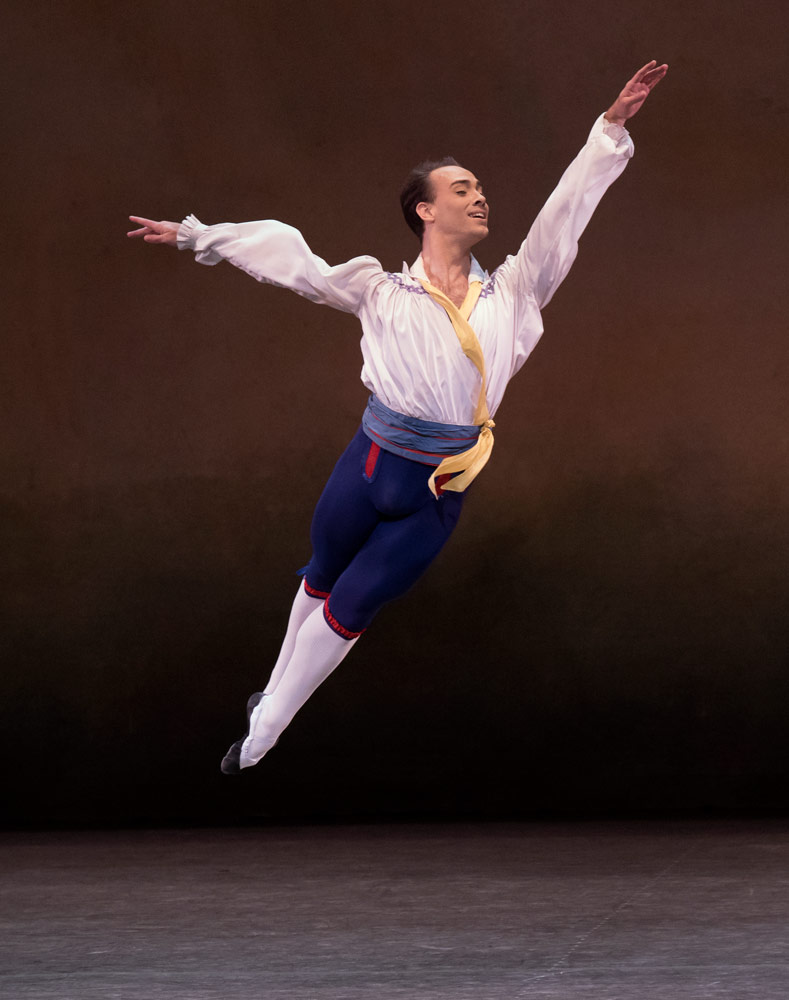
© Paul Kolnik. (Click image for larger version)
In La Sylphide, there is a story to distract from stylistic quibbles. The company is performing a version staged by Peter Martins in 1985 for the Pennsylvania Ballet; this is its City Ballet première. The production is faithful to the original choreography, which Martins has said is “too good to change.” The designs are by the New York artist Susan Tammany, who, surprisingly, works as an usher at the Koch Theatre, where City Ballet performs. (See Michael Cooper’s charming story about Tammany here.) The first act is spare: a story-book farmhouse parlor with a large staircase on the left, a fireplace, and a window in the back to facilitate the sylph’s entrance. In the second act, which takes place in a forest clearing, realism gives way to swirling washes of blue and green, overlaid with tendril-like vines. Tammany’s backdrop is semi-naïf, semi-abstract, characterized by vibrant and glowing colors, like stained glass. It is quite beautiful.
Sterling Hyltin, one of the company’s most versatile dancers and finest dancing actresses, was the Sylph. Hyltin is possessed both of technique – her turns are poised and lovely, her jumps airy, her footwork piquant – and the ability to come alive onstage, reacting with seeming spontaneity to everything around her. In the first act, her delight seemed genuine, as did her longing, her disappointment, and her palpitating eagerness to draw James into her world. She looked startled, even terrified, when he tried to grab her; one of the charms of La Sylphide is that its leads, though in love, barely touch.

© Paul Kolnik. (Click image for larger version)
Joaquin de Luz was a dashing James, his legs thwacking together satisfyingly in the air and feet crossing clearly in smaller jumps, or traversing the stage forcefully in the ballet’s many soaring leaps. His arms opened invitingly at the end of a jump, giving a sense of ease and open-heartedness. His characterization of James was lively and alert, if not terribly nuanced. (He seemed to be in a perennial state of curiosity and delight.) His foil, Gurn, was danced with clownish eagerness by Daniel Ulbricht, another dancer who has no trouble filling the stage with his jumps. Brittany Pollack’s Effie was too one-note: her acting consisted mostly of wide-eyed looks in James’ direction. Effie should be touching; it is her abandonment and humiliation that justify the ballet’s pitiless ending.
Pitiless – and sexy – more or less encapsulates Georgina Pazcoguin’s performance in the role of the witch, Madge. Pazcoguin’s gleeful malevolence had a way of stealing every scene, though a little girl from the School of American Ballet, playing the role of one of her assistants, gave her a run for her money. A word, too, for the guest conductor, Henrik Vagn Christensen, a frequent collaborator with the Royal Danish Ballet, who drew a wide range of textures and individual instrumental colors from the orchestra. Herman Lovenskjold’s score may not be a musical masterpiece, but, well played, it supports the story beautifully.
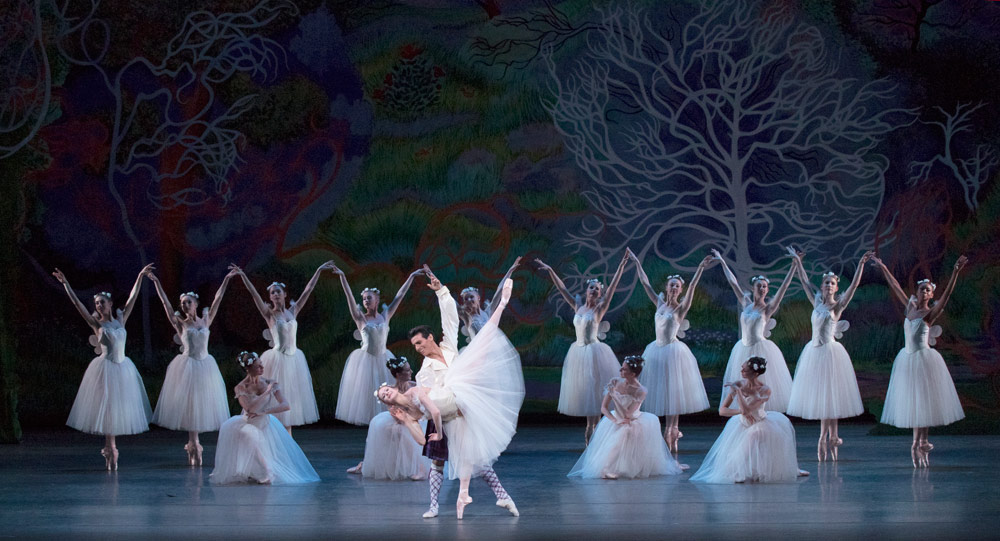
© Paul Kolnik. (Click image for larger version)
But beyond individual performances, there is the marvel of the ballet itself, the way it echoes and foreshadows so many other works in the repertory. The children in the reel remind one of the party scene in Balanchine’s Nutcracker, when parents and children dance together. The percussive folk steps make one think of the jigs and tattoos in Union Jack. The poisoned scarf, and its counterpart, the Scottish tartan, inevitably bring to mind the many scarves that appear in Frederick Ashton’s ballets. And then there are the sylphs, one of the many societies of magical beings that haunt the nineteenth century and return again the twentieth, in ballets like Les Sylphides and The Dream. Also striking is the ballet’s utter lack of sentimentality. La Sylphide has the starkness of a Grimm folktale. The good survive, the sinners perish; and along the way, a delicate, innocent creature is destroyed. Nothing could be simpler, or more cruel.













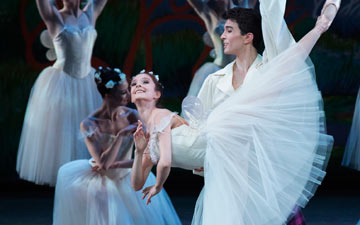

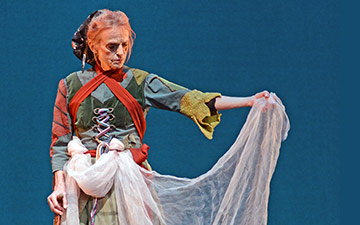
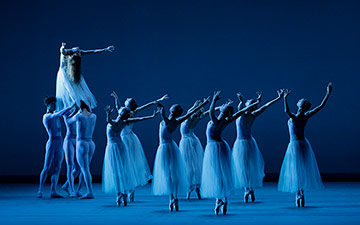
[…] At the spring gala, New York City Ballet unveiled a program of Bournonville works. In the first half, a suite of excerpts, including Flower Festival in Genzano and the tarantella from Napoli. In the second, La Sylphide (performed without an intermission). How did they do? You can see my DanceTabs review here. […]
It was a little boy, Andrew J. Denise, from the School of American Ballet, who played the little witch with Georgina Pazcoguin.
Dear Susan,
I should have known! How great! And what a fantastic little actor.
Thanks for writing in,
M